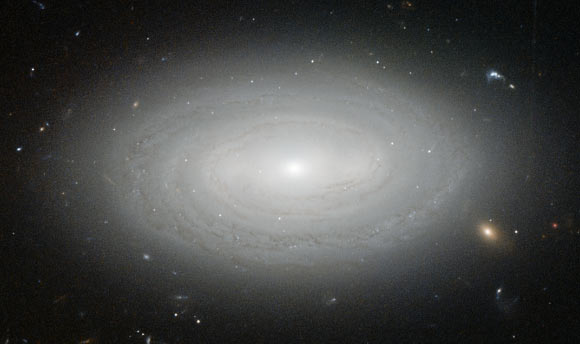A lonely spiral galaxy, LEDA 1852, has been captured in this image from the NASA/ESA Hubble Space Telescope.

This image from the NASA/ESA Hubble Space Telescope shows the distant spiral galaxy LEDA 1852. Image credit: NASA / ESA / Hubble / N. Gorin, STScI / Judy Schmidt.
LEDA 1852, also known as MCG+01-02-015, lies in the northern constellation Pisces, more than 330 million light-years away.
In the Hubble image, the spiral arms of LEDA 1852 seem to wrap around one another, cocooning the galaxy.
The scene suggests an abundance of galactic companionship for the galaxy, but this is a trick of perspective. According to astronomers, LEDA 1852 is a void galaxy, the loneliest of galaxies.
The vast majority of galaxies are strung out along galaxy filaments – thread-like formations that make up the large-scale structure of the Universe – drawn together by the influence of gravity into sinuous threads weaving through space.
Between these filaments stretch shallow but immense voids, where – outside of the rare presence of a galaxy – there is very little matter – about one atom per cubic meter.
One such desolate stretch of space is what LEDA 1852 reluctantly calls home.
This image was made from separate exposures taken in the visible region of the spectrum with Hubble’s Advanced Camera for Surveys.
A version of this image was entered into the Hubble’s Hidden Treasures image processing competition by astronomer Judy Schmidt.








